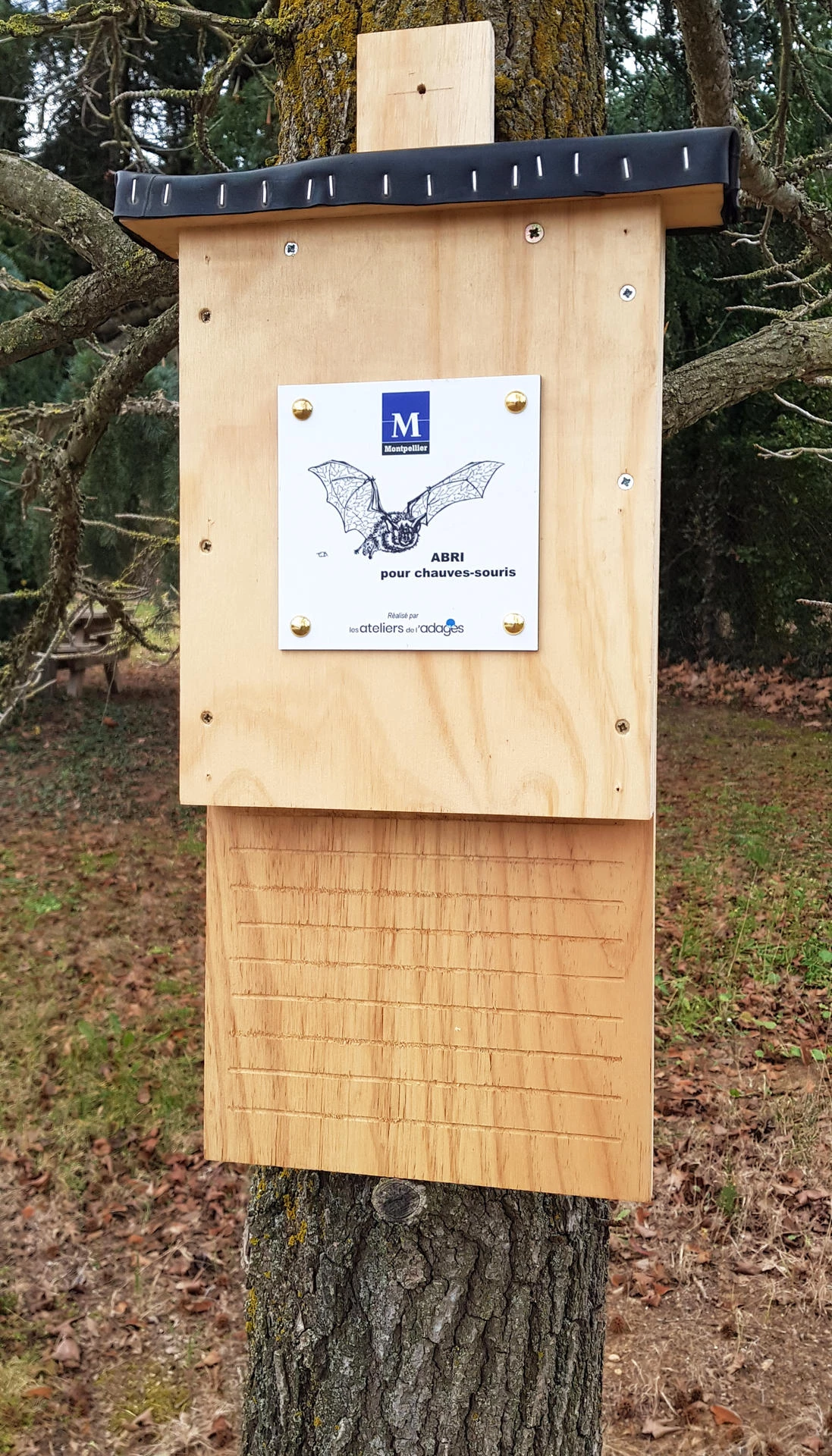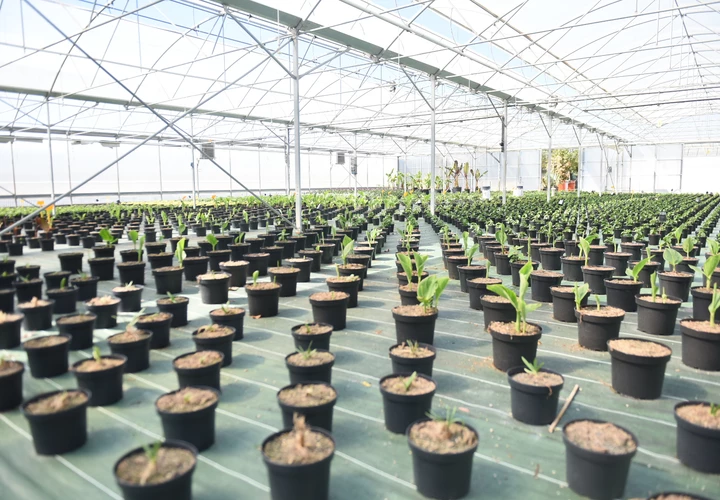The bat house
What is a bat shelter?

The bat house is a wooden device measuring 52 cm high, 30 cm wide and 7 cm deep. The grooved bottom board allows bats to land and then squeeze through the gap to rest in the shelter.
Installing a bat house in your garden helps to preserve certain species of bat found in Montpellier (mainly pipistrelle species). Bats are all protected in France, and Montpellier has a very high diversity of bats, with 17 species recorded.
How does it work?
The bat house must be installed exclusively in a garden: your own garden or that of your residence (having first obtained the agreement of your condominium manager).
30 devices are distributed per season.
In brief
What the town does:
- Donation of a bat house
- Allocation in autumn
Installation and maintenance requirements:
- Come and collect your house
- Install it in your garden or in the garden of your residence
How to install it and optimize the chances of it being occupied
- Install the gite between 2 and 5 m high.
- Expose it due south, south-east or east, sheltered from prevailing winds, on a tree or facade in a garden. You can also position it in your attic, provided you leave a passage for the bats to access.
- Avoid installing the gite near a light source that's too powerful.
- Don't allow predators, cats in particular, access to the gite: cut branches just below the gite, and avoid proximity to windowsills, etc.
- Take care to attach the device securely and not to injure the supporting tree: secure the gite with a sheathed cable, for example, interposing small pieces of wood between the trunk and the cable before tightening.
- Don't paint or treat the gite, but you can use natural products such as linseed oil to protect it from the elements.
- Let spontaneous vegetation grow in corners of the garden, mowing less often and less short. A watering hole will also be appreciated
- Most importantly, don't disturb the lodge.
To find out if the lodge is occupied:
- The presence of droppings is a good indicator: these are small, very crumbly droppings, the size of a grain of rice, which accumulate at the foot of the lodge.
- Observation in the early evening to identify the animals' exit while remaining at a distance so as not to disturb.
- Bats don't always settle quickly into lodgings, but you often have to give them time to do so. In the event of your gite not being occupied, it's advisable to leave it in the same place for at least two years before moving it.
- Check the gite attachment every year and change it if necessary at the end of the summer.
Good to know
Bats are the only mammals capable of flight. They are nocturnal and active from spring to autumn, hibernating in winter. In France, all bats are insectivores, so they help to regulate insect populations. They produce ultra-sounds that enable them to orientate themselves and locate their prey: this is known as echolocation.
The design of the cottages has been thought out to fit in with an ethical and sustainable logic. They are made of wood and recycled materials. They are assembled at the ESAT (Etablissement et Service d'Aide par le Travail) Les ateliers de l'Adages in Lattes.
Where and when to collect your bat shelter?
The registration period runs each year from January 1 to June 30. Revegetation vouchers are distributed in November.
Climate issues are forcing us to be vigilant about water consumption and to choose the best planting period. The city of Montpellier has therefore decided to extend the vegetation voucher to one season/year.
If your application is accepted, your pollinator cube is to be collected at the Centre Horticole municipal:

Serres municipales - Centre horticole
Moving house?
Please notify the Nature Agroecology and Landscape Department by phone or e-mail: 04 67 20 99 00 / dnap@montpellier.fr
